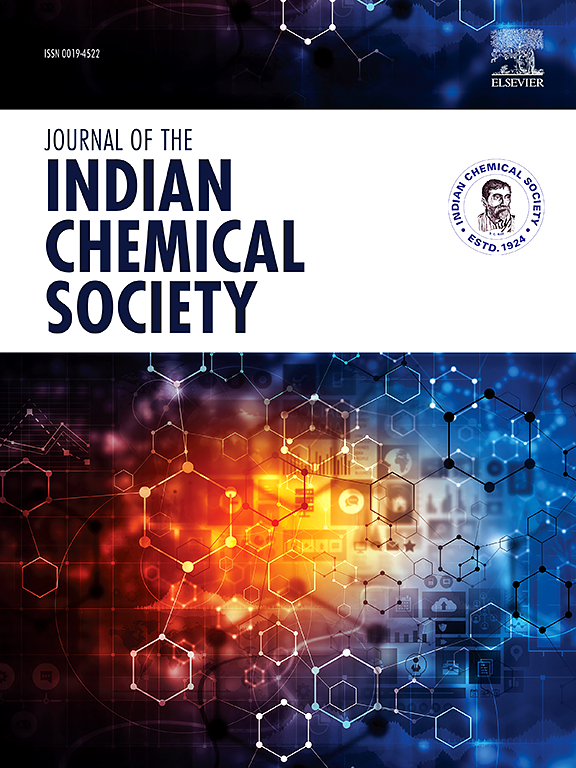Synthesis of coconut husk-derived partially oxidised graphene oxide for methylene blue dye removal
IF 3.2
4区 化学
Q2 CHEMISTRY, MULTIDISCIPLINARY
引用次数: 0
Abstract
In this study, partially oxidised graphene oxide derived from coconut husk was synthesized and evaluated for its adsorption performance toward methylene blue dye. The synthesized partially oxidised graphene oxide was characterized using scanning electron microscopy (SEM), energy dispersive X-ray spectroscopy (EDX), and Fourier-transform infrared spectroscopy (FTIR), confirming the successful formation of the material. Batch adsorption experiments were conducted to optimize process parameters, with the optimal conditions determined as 24-h equilibrium time, 0.1 g adsorbent dosage, and 15 mg/L initial methylene blue dye concentration. Under these conditions, the maximum adsorption capacity of the partially oxidised graphene oxide was 14.73 mg/g at 298 K. Isotherm analysis revealed that the Langmuir model (R2 = 0.96) provided the best fit, indicating monolayer adsorption. Kinetic studies showed that the pseudo-second-order model (R2 = 0.99) accurately described the adsorption process, suggesting chemisorption. The thermodynamic analysis demonstrated that the adsorption was endothermic (ΔH° = 13.87 kJ/mol) and spontaneous, with negative Gibbs free energy values (ΔG° ranging from −15.98 to −22.28 kJ/mol). These findings highlight the potential of the partially oxidised graphene oxide synthesized from coconut husk as an effective and sustainable adsorbent for dye removal from aqueous solutions.

椰壳衍生部分氧化氧化石墨烯去除亚甲基蓝染料的合成
本研究以椰子壳为原料合成了部分氧化的氧化石墨烯,并对其对亚甲基蓝染料的吸附性能进行了评价。利用扫描电子显微镜(SEM)、能量色散x射线光谱(EDX)和傅里叶变换红外光谱(FTIR)对合成的部分氧化石墨烯进行了表征,证实了材料的成功形成。通过批量吸附实验对工艺参数进行优化,确定最佳吸附条件为平衡时间24 h,吸附剂用量0.1 g,亚甲基蓝初始浓度15 mg/L。在此条件下,部分氧化的氧化石墨烯在298 K下的最大吸附量为14.73 mg/g。等温线分析表明,Langmuir模型(R2 = 0.96)拟合最佳,为单层吸附。动力学研究表明,拟二阶模型(R2 = 0.99)准确地描述了吸附过程,表明是化学吸附。热力学分析表明,吸附为吸热吸附(ΔH°= 13.87 kJ/mol)和自发吸附,Gibbs自由能为负(ΔG°范围为−15.98 ~−22.28 kJ/mol)。这些发现强调了由椰子壳合成的部分氧化氧化石墨烯作为一种有效和可持续的吸附剂从水溶液中去除染料的潜力。
本文章由计算机程序翻译,如有差异,请以英文原文为准。
求助全文
约1分钟内获得全文
求助全文
来源期刊
CiteScore
3.50
自引率
7.70%
发文量
492
审稿时长
3-8 weeks
期刊介绍:
The Journal of the Indian Chemical Society publishes original, fundamental, theorical, experimental research work of highest quality in all areas of chemistry, biochemistry, medicinal chemistry, electrochemistry, agrochemistry, chemical engineering and technology, food chemistry, environmental chemistry, etc.

 求助内容:
求助内容: 应助结果提醒方式:
应助结果提醒方式:


